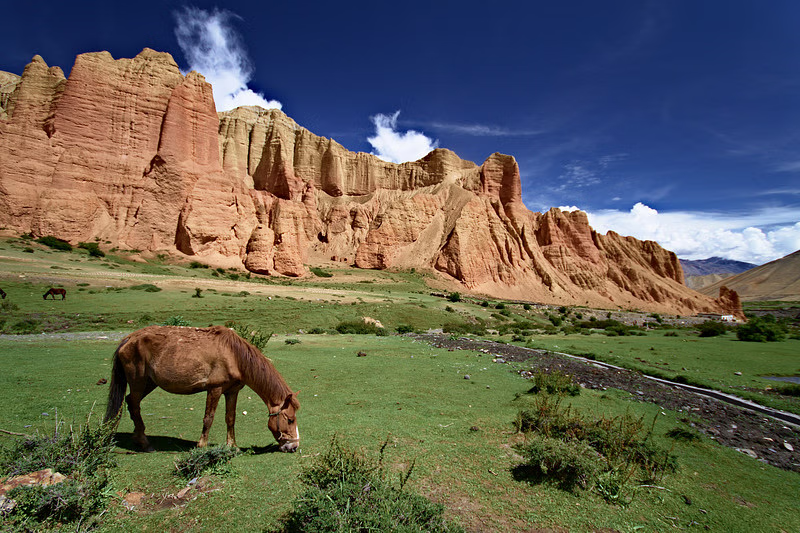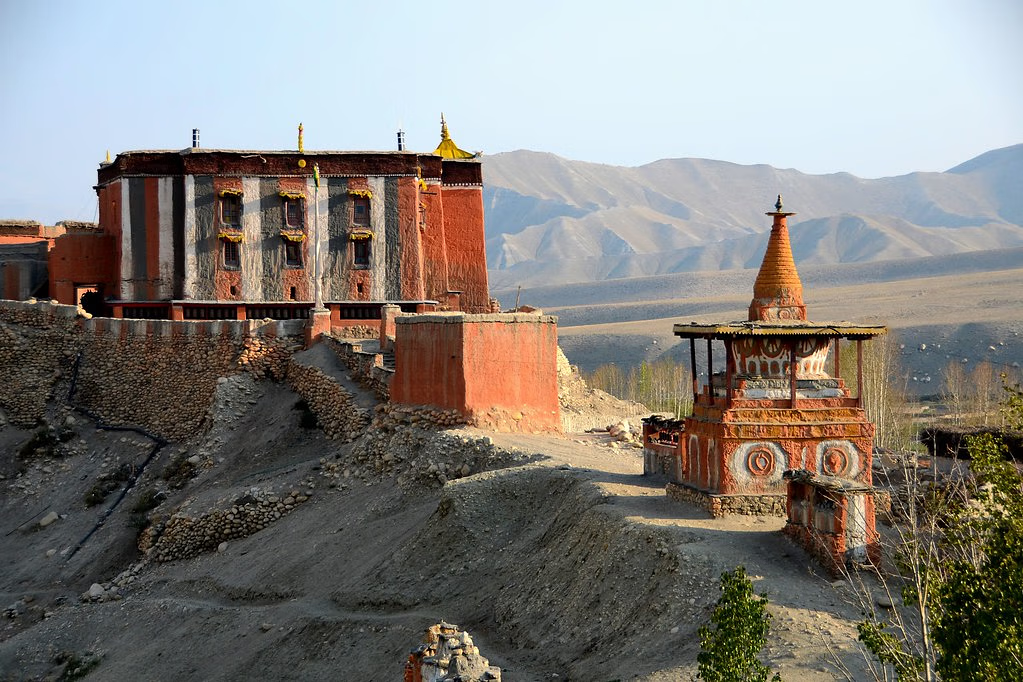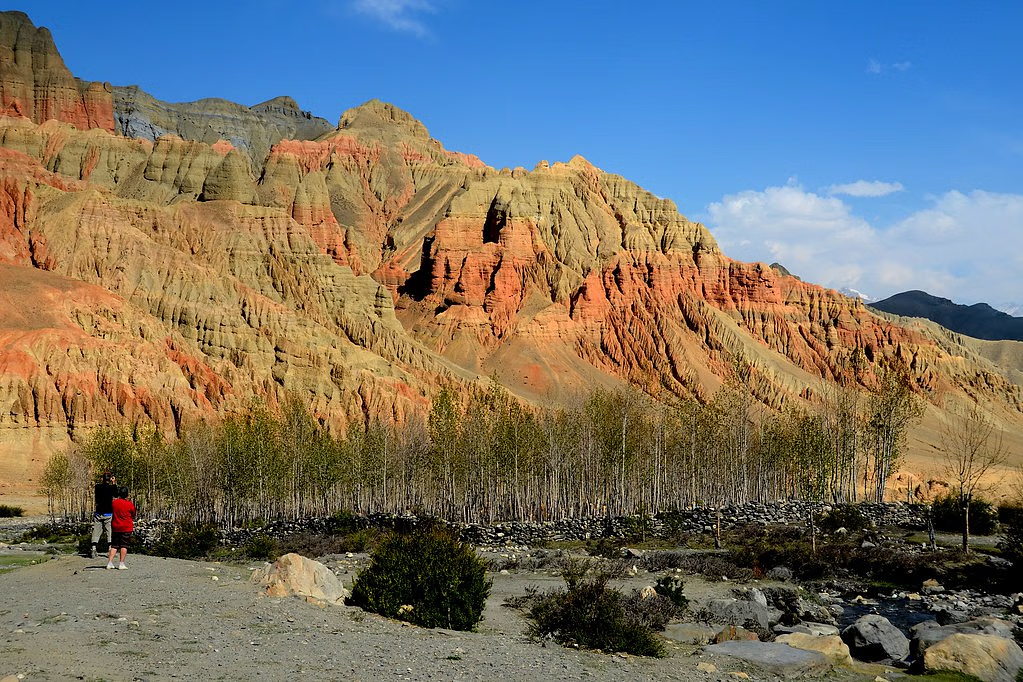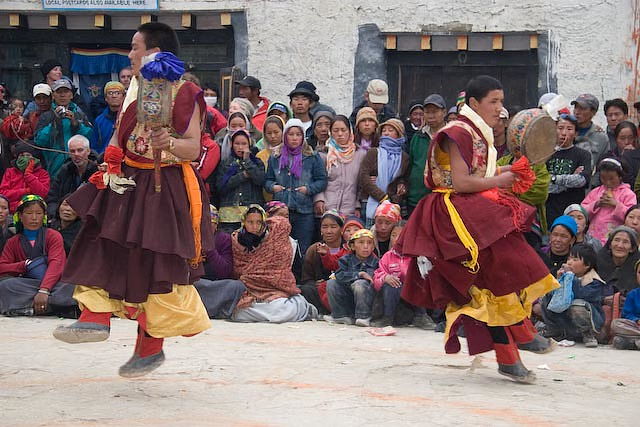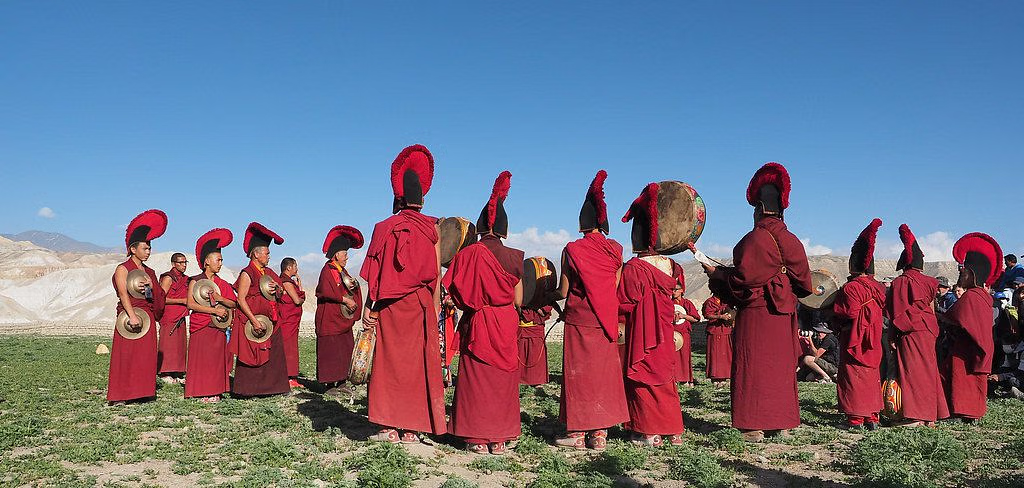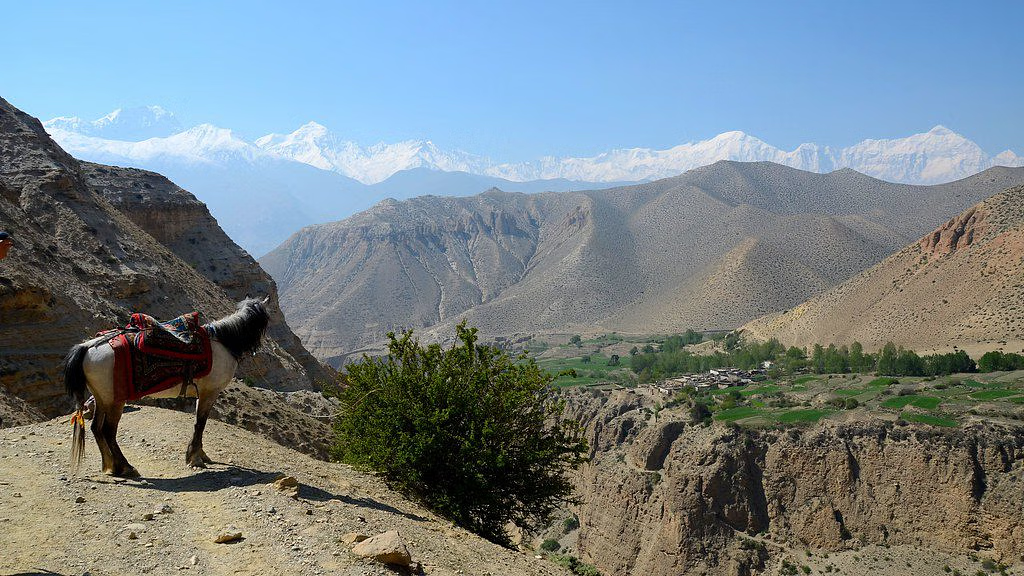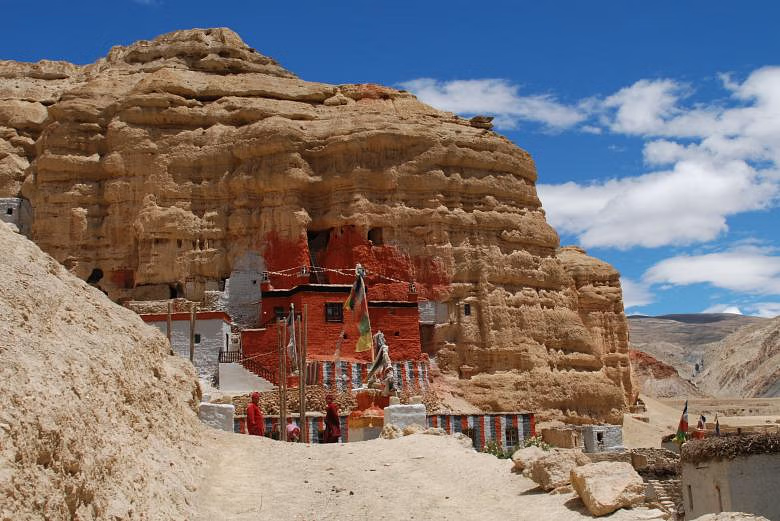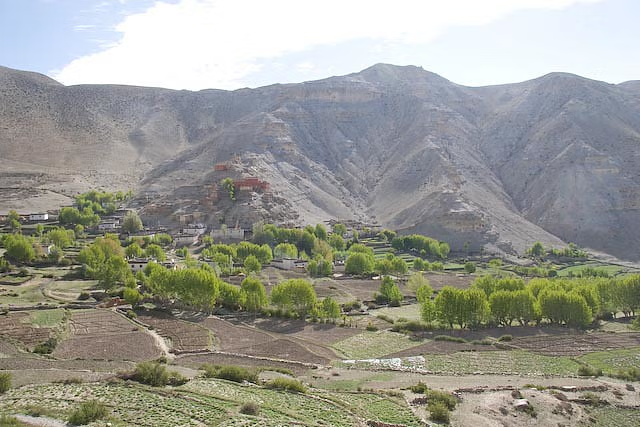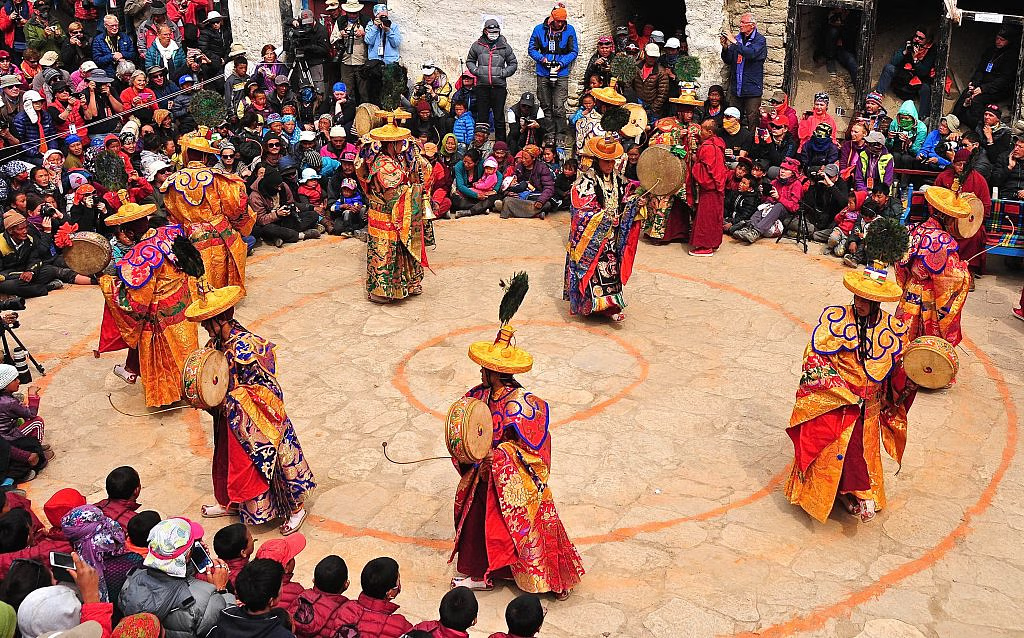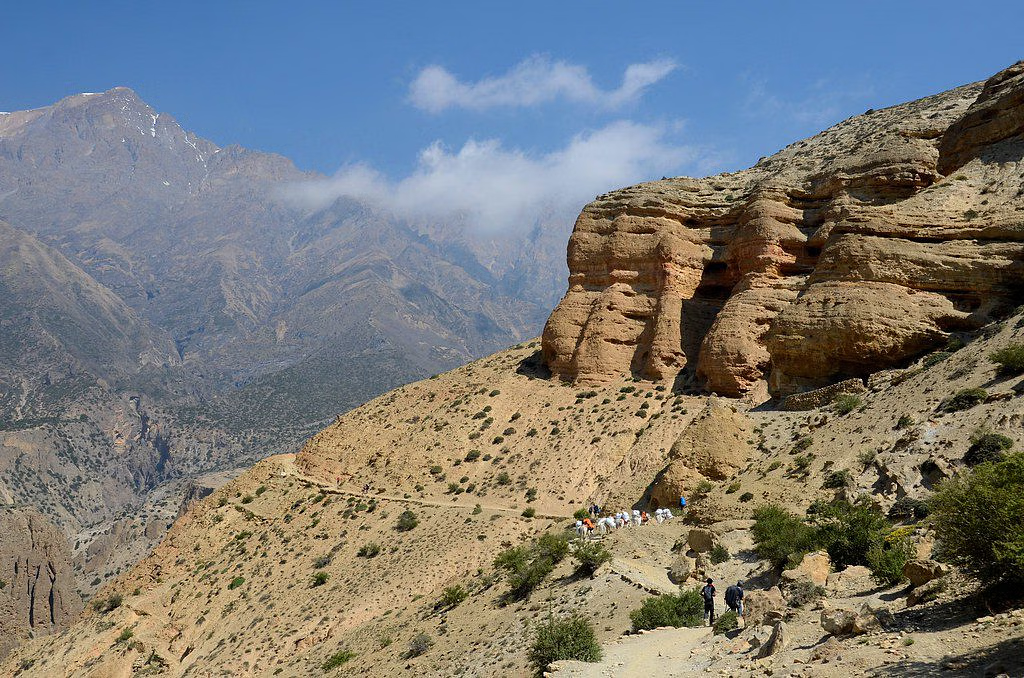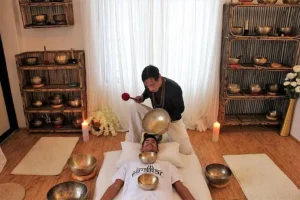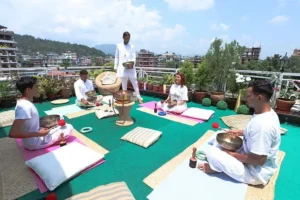18 Days
12
Moderate
Tiji Festival is a colorful festival celebrated in the Lo Manthang region of Upper Mustang. This festival holds a significant place among the truest mountain people who follow Tibetan Buddhist culture. Tiji Festival is celebrated for three days every year at the beginning of the harvest season. This spring renewal festival marks the celebration of the triumph of good over evil. In a local ritual, they celebrate this festival to chase away the demons.
During this festival, people gather together and express themselves in different ways with traditional colorful customs, with hideous masks, dance, and music. They show the drama of the deity winning over the demon, believing that the demons are chased away from their place. They chant their prayers and remember their god. Even the monks wear their traditional customs and present themselves in vibrant colors; red, yellow, blue, and with their multicultural flags, which makes the entire ambiance appealing and lively.
Upper Mustang Tiji Festival Trek coincides with the combination of the dramatic Himalayan desert with the magnificent views of massive Dhaulagiri, Annapurna, and Nilgiri ranges in the backdrop. Trekking through the world’s deepest gorge, Kaligandaki Gorge, and the high, vibrant walls of Mustang villages, exploring the centuries-old lifestyle of people, adds a significant cultural and geographical highlight.
Itinerary
Our representative will meet you on your arrival at the Airport and transfer you to the Hotel. An information session about the program will be conducted by our Tour Guide. Overnight stay in Hotel.
Early in the morning after breakfast, our tour guide will takes you for the sightseeing around the Kathmandu, the sightseeing site are- Durbar Square, the sacred Hindu temple of Pashupatinath, the famous ‘Monkey Temple’ (Swayambhunath) and Buddhists shrine (Bouddhanath) which is one of the large Stupas in the world. In the late afternoon, you will have preparation for the trek, and you can buy necessary equipment.
On this day, we have our breakfast by 6:00 a.m. in the morning and head towards the tourist Bus Park at Thamel and board a tourist bus to Pokhara. The bus ride will take around 7 hours through curvy roads of hilly terrain with a couple of breaks in between for snacks and lunch. The drive to Pokhara on one of the major highways is exhilarating with beautiful views of never-ending tributaries, lush green hills, and roadside settlements.
An appealing drive to Kagbeni starts after a delicious breakfast in Pokhara. The journey to the starting point of Mustang passes through beautiful landscapes. The Kagbeni village is situated at the bank of the rushing Kaligandaki River. Kagbeni is the main entrance gate for Upper Mustang.
Our trek to Chele begins from Kagbeni through the east bank of the Kali Gandaki River. The landscapes follow through uphill and downhill sandy trails to Tangbe Village, which offers the finest view of Nilgiri Peak. Whitewashed houses, apple orchards along the way lead us to Chhusang Village and finally cross the Kali Gandaki Valley to Chele. Overnight, we stay at Chele.
An early morning hike towards Geling along steep, treeless terrain at an altitude of 3540m gives you the vibe of trekking through the desert. A long, gradual descent toward the Samar Village, into a large gorge, streams, and a gorge takes us to the Shyagmochen. Furtherly, we descend to Geling village. Overnight, we stay at Geling.
Today, we continue our trip towards the longest Mani walls in Mustang. The trail follows a suspension bridge over the Tangmar Chu River and a gentle NYI La Pass. We head towards a Dzong and Red Gompa, slowly descending towards Charang village. Overnight, we stay at Charang.
From Charang village, we gently climb up to visit the oldest Gompa of Nepal, Lo-Gekar Gompa. Then, we continue our trail towards the plateau of Lo-Manthang, enjoying the walled city of Lo. Lo- Lo-Manthang is the capital of this Himalayan Kingdom.
30th May 2019. Mark your calendar! Today is the first day of Tiji Festival. The celebration of this ceremony lit-up with the lively ambiance as the people gather together in the vibrantly colored traditional dresses and they showcase their own way of dancing style. Not only this, tug-of-war and horse racing are the major attractions of this day. We spend this day observing this unique celebration. Overnight, we stay at Lo-Manthang.
Tibetan monks perform unique dance and dramas to chase away the hungry demons from their villages. Many people from different regions of Mustang will be involved in this celebration. After this, we will walk around to explore the other appealing villages around Lo- Manthang. Overnight, we stay at Lo-Manthang.
Today is the last day of Tiji Festival. We will hike around the Namgyal Gompa which lies on a hilltop, which is also an important monastery. Then, we continue to explore the Tingkhar village situated to the northwest of Lo-Manthang. After this, we come back at Lo-Manthang and watch out the final moment of celebration of Tiji Festival. Overnight at Lo-Manthang.
Today, we climb up to the highest point of our trek to Chogo La, at an elevation of 4210m. We head to explore Lo Gekar and continue to descend Ghar Gompa. Then, we walk through the alpine meadows and steep down to Drakmar. Overnight at a comfortable guesthouse in Drakmar.
We head towards the stone walls pass and the small fields of Drakmar descending through the lower part of Ghami and Jaite. Then, finally, descend to Tama Gau to Shyangmochen. Overnight, we stay at guesthouse.
Today, we hike down to Chhusang Village passing by an alternative route to Samar by visiting Ranchung Cave.
Today, we complete the route of Upper Mustang and head towards the Jomsom through the Lower Mustang(Kagbeni). We stay at Jomsom tonight.
We head towards Pokhara by a scenic Himalayan flight from Jomsom.
On this day we have our breakfast by 6:00 a.m. in the morning and get ready to head towards Kathmandu. The bus ride will take around 7 hours through curvy roads of hilly terrain with couple of breaks in between for snacks and lunch. Tracing the same way back we reach Kathmandu and we transfer you back at the hotel.
Today we say our final goodbye. Our representative will come to see you off at the airport. Hoping you had a pleasant and wonderful trekking experience we bid you goodbye.
Cost Includes
What’s included?
- Arrival / Departure transfers on both domestic and international flights.
- Standard Hotel Accommodation in Kathmandu / Pokhara on a twin share bed- and- breakfast basis as per the itinerary.
- Tourist Coach Kathmandu-Pokhara-Kathmandu
- Domestic Flight from Jomsom to Pokhara.
- Trekking Permit ($500) and Annapurna Conservation Area entry fees.
- 30 minutes of Wellness and Spa after Trekking.
- Comfortable teahouse accommodation during the tour.
- Welcome Dinner with a cultural program as listed in the itinerary.
- Half-day guided city tour as listed in the itinerary.
- Free use of quality trekking gear – sleeping bag, fleece inner liner, down jacket, duffel bag, etc, during the trip.
- Professional local trekking group leader well trained in Wilderness First Aid.
- Comprehensive First Aid Kit.
- Trekking guides and other support staff.
- Upper Mustang Trekking map.
- Osho Adventure T-shirts / other seasonal gifts.
- Comprehensive pre-departure information and trip dossiers
- All applicable Government taxes.
Cost Excludes
Exclusions
- International Airfare to and from your country
- Nepal Visa fee: Nepal entry visa (US$ 25 or equivalent foreign currency for 15 days, US$ 40 or equivalent foreign currency for 30 days & US$ 100 or equivalent foreign currency for 90 days. You will also require 2 passport size photos.)
- Travel & Health Insurance- Emergency Helicopter Rescue Insurance (Most recommended)
- All standard meals during the trek are optional add-ons (Breakfast, lunch, and dinner)
- Lunch & Dinner in Kathmandu – costs $ 5 to 10 per meal in a Tourist Restaurant.
- Extra accommodation in Kathmandu and Pokhara in case of early return from trekking than the scheduled itinerary.
- Any Alcoholic Drinks, Cold Drinks, Boiled & Mineral Water, Beverages, deserts, etc, in Trek.
- Unforeseen costs such as Flight Cancellation, being Sick in the Trek, and a Helicopter rescue in the Trek. Cost due to bad weather, etc, which is out of our control.
- Personal expenses such as phone calls, laundry service, the internet, bar bills, battery recharge, hot shower, etc.
- Any Other costs which are not mentioned in the Cost Includes Items as above.
- Tips for Guide & Porter after trek completion.
Notes
- Accessible for those with limited eyesight
- Public transportation nearby
- Infant seats available
- Passport required
- Dress code
Porter-supported trek
Two clients share one porter. We will supply you with a trek duffel bag where you keep your heavy items and this bag is carried by the porter. You will need to bring your own daypack to be carried by you. In the daypack, you can put money, important documents, water bottle/bladder, camera, toiletries, sunscreen, notebook, etc.
The weight limit for Kathmandu-Lukla-Kathmandu flights is 15 kg or 33 pounds. This is combining both the duffel bag and the daypack. If you exceed this limit, you will have to pay an additional fee. When this happens, sometimes the airline sends your bag in later flights and this can be very problematic for many reasons. You can leave your non-trekking stuff at the locker facility in the Kathmandu hotel.
Cultural Awareness
Tight fitting, figure-hugging clothing such as those made with Lycra can often be offensive to locals, especially to women. If you find these items comfortable as a base layer, please pack something to wear on top of them.
What do I need to bring?
General
- 4-season sleeping bag (we can borrow you need it but has to be returned after the trek)
- Duffel bag
- Daypack
- Down jacket (we can borrow you one, but it needs to be returned after the trek)
Upper Body—Head/Ears/Eyes
- Sun hat
- Wool or synthetic hat that cover the ears
- Sunglasses with UV protection
- Headlamp
- Neck warmer
- Hand
- Liner gloves
- Heavier shell gloves
Core Body
- T-shirts (2)
- Lightweight expedition thermal tops
- Fleece jacket or pullover
- Water/windproof shell jacket (Preferably breathable fabric)
- Synthetic sports bras (for women)
Lower Body—Legs
- Lightweight expedition thermal bottoms
- Nylon hiking shorts
- Soft and shell trekking pants
- Water/windproof trousers
- Casual pants
- Feet
- Liner socks
- Heavyweight socks
- Waterproof hiking/trekking boots
- Light shoes/sneakers
- Gaiters (For monsoon and winter)
First Aid Kits
Please note our guide will carry the first-aid kit bag during the trek. However, we still recommend you bring your personalized first-aid kit as well.
- Extra Strength Excedrin for altitude related headaches
- Ibuprofen for general aches and pains
- Immodium or Pepto bismol capsules for upset stomach or diarrhea
- Diamox (commonly prescribed as Acetazolamide) 125 or 250mg tablets for altitude sickness
- Anti-infection ointments
- Band-aids
- Lip balm (At least SPF 20)
- Sunscreen (SPF 40)
Miscellaneous, but Important !
- Passport and extra passport photos (3 copies)
- Airline tickets (Please make a copy and leave one at our office in KTM just in case if you need to change the date of yours.)
- Durable wallet/pouch for travel documents, money & passport
- Water bottle/bladder
- Water purification Iodine tablets
- Toiletry kit (Be sure to include toilet paper stored in a plastic bag, hand wipes, and liquid hand sanitizer, towel, soap, etc.)
Optional
- Adjustable trekking poles
- Favorite snack foods (No more than 2 pounds)
- Paperback books, cards, mp3 player
- Binoculars
- Cameras (Memory cards, chargers and also batteries)
- Pee bottle for men and pee funnel for women

